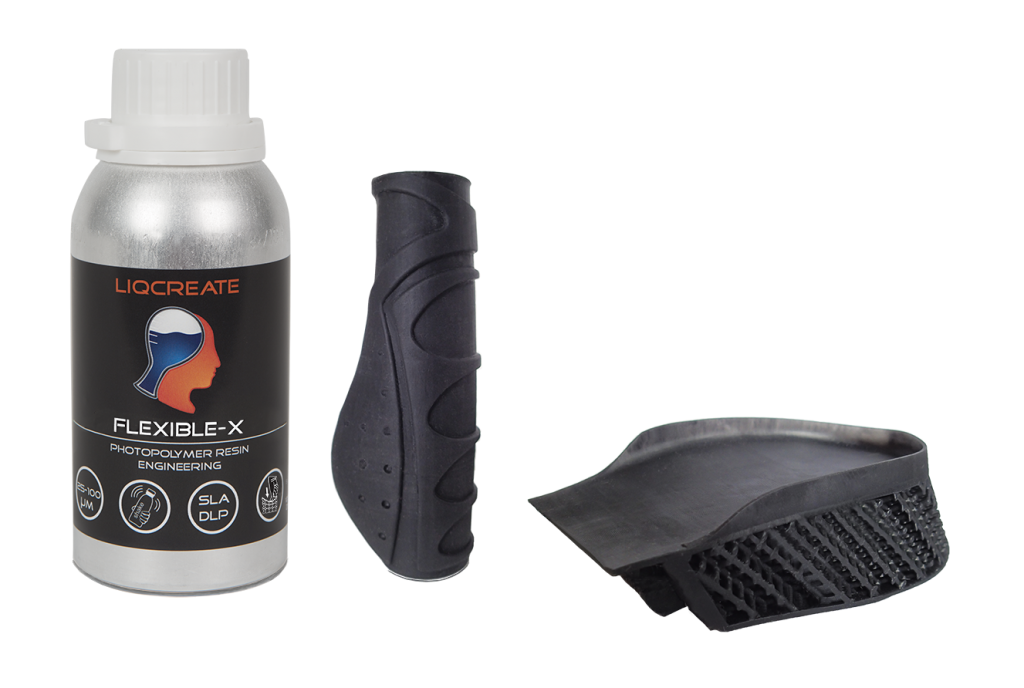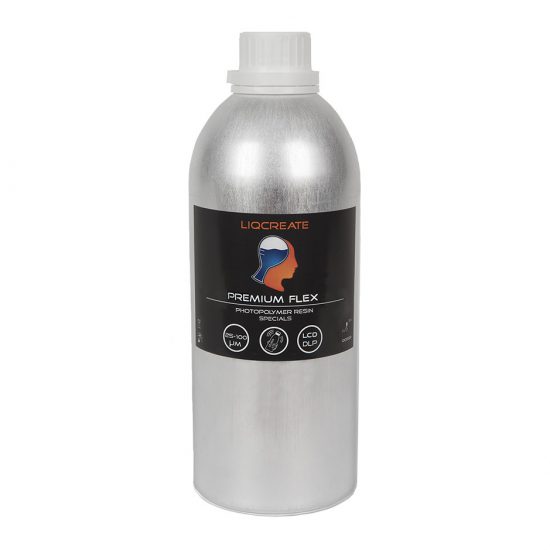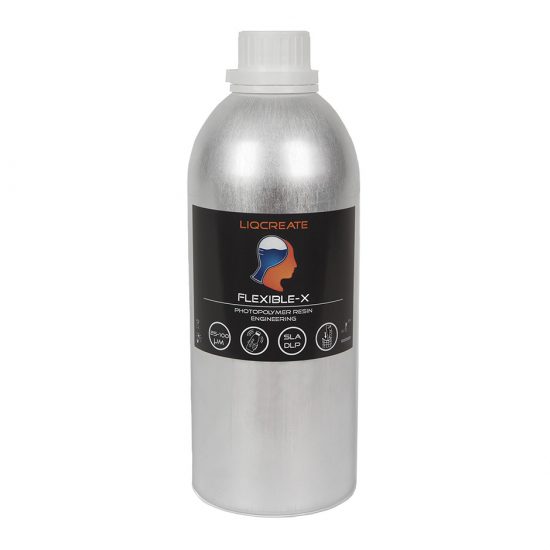Recent developments in resin based 3D-printing materials made it possible to 3D-print flexible, elastic and soft resins. Before these developments, flexible materials or TPU (Thermoplastic polyurethanes) were only available for FDM and laser sinter printers (SLS). With the development of flexible, elastic and soft 3D-printing resins for SLA, DLP and MSLA 3D-printers, everybody can now make their custom flexible rubber-like parts. Earlier we published an article about the different flexible or elastic resins available and how they can help for your project. In this article we try to answer the question: How Flexible is a flexible resin? Additionally, the differences between Liqcreate Premium Flex and Flexible-X are explained. Learn in the link how manufacturers use flexible 3D-print resin to make rubber-like parts.
How flexible is flexible resin?
We often get the question how flexible a flexible resin is. This question seems easy, but is quite difficult to answer. For strong resins, the tensile of flexural strength can be measured and expressed into a number. For flexibility, there are not that clear metrics to classify the resins.
How to measure flexible 3d-printing resin?
There are a few measurements that will define resin properties of flexible resins, more details are explained here and in this article. The following properties define how flexible a resin is: Shore A Hardness, Elongation at break, Tear Strength and Compression set.
Let’s start with the easiest one to measure and understand, the Shore A Hardness. The Shore A says something about the surface hardness of a material. A pointed steel pin is pressed with a pre-set time and pressure on the surface of the 3D-printed flexible resin part. The amount of indentation tells something about the surface hardness. A lower number means a softer surface.
The Elongation at break is also an important measurement. Here tensile test-bars area pulled apart and the percentage of elongation before breaking is measured. A higher number means that the material can stretch further before breaking. The amount of force for breaking or surface hardness does not play a role in this number.
For most engineering flexible 3D-printing resins, the part must withstand some regular use or force. The number of Tear Strength gives a good idea about the forces put on a part before it starts to tear. Higher numbers are often achieved by more rigid materials (higher shore value) and are difficult to compare. For extreme conditions, a material with high tear strength is preferred.
For a lot of rubber like applications like seals, the compression set is of major importance. This will measure how much a part of printed flexible resin will return to its original shape after being compressed for a set time and temperature. If it is difficult to imagine how these properties for flexible resins play a role, you can also look at the video’s below and above to compare how the two different flexible Liqcreate resins compare.
What are the difference between Premium Flex and Flexible-X?
Liqcreate Premium Flex and Flexible-X are two completely different products, both with their own advantages and applications. In mechanical properties and print behavior, there are three main differences. To compare both flexible resins, click on the link above and match the properties.
- – Flexible-X has a higher elongation
- – Flexible-X has a significantly higher tear strength
- – Premium Flex has an increased print speed, more than 2-3x faster than Flexible-X. Find the 3D-print parameters for flexible resin on your 3D-printer here.
For prototyping and not so demanding applications, Premium Flex could work well. For more demanding applications Flexible-X is advised due to its improved tear strength.
Support
Do you need any help with 3D printing our SLA, DLP or LCD resins? We can help you! Just look for the question you have below. If you can’t find it, let us know by contacting us!
Printer Settings →
About Premium Flex
Liqcreate Premium Flex is a translucent turquoise blue photopolymer with great processability and print speed on MSLA and DLP based 3D-printers. 3D-printed parts from this material have excellent flexibility and low surface hardness of 63 Shore A. Liqcreate Premium Flex is easy to use on all open source DLP and LCD 3D-printers in the range of 385 – 420nm. Its high elongation and low Shore A hardness makes it perfect for diversity of soft touch and elastic prototypes.
Key benefits |
3D-Printer compatibility |
| · High Elongation | · Phrozen Series |
| · Soft touch | · Elegoo Series |
| · Easy to print | · Anycubic Series |
| · High flexibility | · And many more |
About Flexible-X
Liqcreate Flexible-X is an opaque black photopolymer resin for open MSLA, DLP and laser based 3D-printers. 3D-printed parts from this material have exceptional flexibility and great rebound properties. Liqcreate Flexible-X is compatible with open DLP, LCD, MSLA and SLA 3D-printers in the range of 385 – 420nm. Its low hardness of 55 Shore A and elongation up to 160% makes it perfect for the manufacturing of soft touch and elastic parts for industrial use.
Key benefits |
3D-Printer compatibility |
| · High Elongation | · Epax3D Series |
| · Excellent Rebound | · Phrozen Series |
| · Good Tear Strength | · Anycubic & Elegoo Series |
| · Durable Soft Touch | · And many more |





